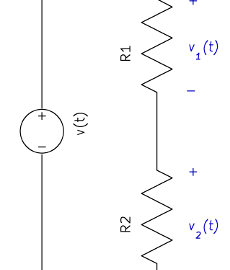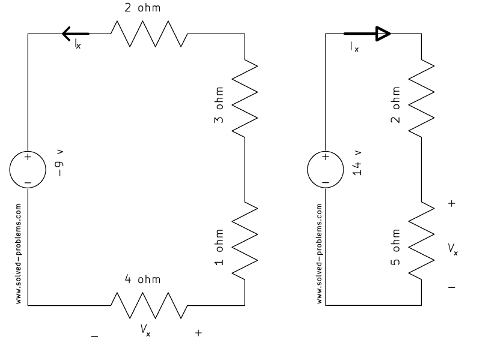A 6-node circuit is solved by the nodal analysis method and powers of voltage and current sources are calculated. The system of linear equations has three equations with three unknowns.
Author Archives: Yaz
Nodal Analysis – Dependent Voltage Source
A circuit with 3 nodes, one dependent voltage source, two current sources and three resistors is solved by the nodal analysis. The PSpice simulation result is also illustrated.
Nodal Analysis – Dependent Current Source
Nodal analysis method is deployed to solve a four-node circuit which has a dependent current source. The target is to find the power of the controlled current source.
Nodal Analysis – Dependent Voltage Source (5-Nodes)
The nodal analysis method is deployed to solve a circuit which has one dependent voltage source, one independent voltage source and one independent current source.
Nodal Analysis – Supernode
This is a circuit with two voltage sources and two current sources. Nodal analysis method is used to solve the circuit. One of the voltage source forms a supernode between two nodes.
Nodal Analysis Problem with Dependent Voltage and Current Sources
This is a complicated nodal analysis problem. The circuit has two independent sources and two dependent sources. A supernode is formed to solve the problem.
Reference Node and Node Voltages
A node is usually labelled as the reference node also called ground and the other node voltages are defined with respect to this point. The reference node has a potential of 0 V by definition.
Voltage Divider – Voltage Division Rule
Voltage Division Rule: The voltage is divided between two series resistors in direct proportion to their resistance. This simple rule can be used in solving simple circuits or in simplifying the solution of complicated ones. In this post, the voltage divider circuit is studied and some examples are solved to show how this rule can be deployed in solving circuits.
Problem 1-16: Voltage Divider
In this solved problem, four circuits are solved using voltage divider (the voltage division rule). Problems are arranged from simple ones to more challenging ones. It is shown how voltage divider can be used to solve simple problems.
Ideal Independent Sources
The ideal independent voltage and current sources are explained. Their symbols and voltage-current characteristics are presented. It is shown how their definitions can be used to solve problems. Some examples are also provided to clarify their characteristics.







